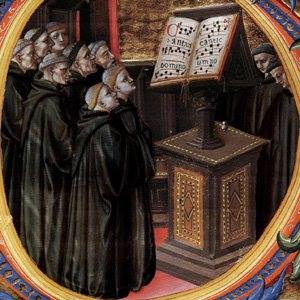On this day in AD 312, Constantine defeated Maxentius in the Battle of Milvian Bridge, near Rome. Constantine certainly thought his victory, against the odds, to be due to divine intervention. At some point it became clear that the divinity involved was the God of the Christians. It is unclear whether the divine intervention was interpreted as Christian from the outset, , not, when it became considered Christian. Constantine and Maxentius were rival claimants to be emperor of the western half of the Roman empire, an empire still very much attached to the ancient Roman religion.
Legend tells us that Constantine, who was a Yorkshire lad, had a mystical vision the night before the battle. Lactantius says that Constantine was told in a dream to paint a heavenly sign on the shields of his legions, and he marked them with a sign of Christ. The sign is described as something looking a bit like a capital P with a bar across it, which makes it look in between a Latin cross and the Greek monogram for Christ, the Chi-Rho. Eusebius mentions the battle in his Ecclesiastical History, tells us that God helped Constantine win, but says nothing of visions. However, in his Life of Constantine, Eusebius gives us the lowdown. He first describes Constantine leading his legions, when he sees a cross of light above the sun with the motto Εν Τούτῳ Νίκα (En Toutô Nika, ‘win with this’). That night he had a dream that he should carry this sign into battle. Eusebius also tells us that Constantine used a Chi-Rho sign as his labarum, or military standard. The earliest evidence of the Chi-Rho is from a Constantinian coin from around 317.
Whatever we think about the vision and signs, Constantine’s victory led him to dominate the entire Roman empire. And whatever Constantine’s personal religious leanings were, his reign ushered the persecuted Christian faith into the heart of empire to become the new Roman civic religion. His Edict of Milan, promulgated the following year, granted toleration to Christianity and returned confiscated church property. Although scholars debate the issues around Constantine and Christianity, this period marks the beginning of the sticky connection between European political power and the church (so called Christendom).
The other anniversary today is the 1647 Putney Debates, a meeting between members of the New Model Army at St Mary’s Church, Putney, to debate the political future of England. The army had triumphed over the despotic Charles Stuart sr, who was a virtual prisoner. On the one side were the Grandees, officers of the army, including Oliver Cromwell and Henry Ireton; on the other were the Agitators, elected representatives from the radical cavalry regiments, most of whom were Levellers, led by John Lilburne. These soldiers fought for dearly held religious and political beliefs. In the end the Grandees gained the upper hand, and carried out modest reforms in politics. However, the radical position of the Agitators speaks to us today of how we have repeatedly shied from true democracy.
28 October is an important day for all of us who wish to think deeply about the relationships between politics and religion.
